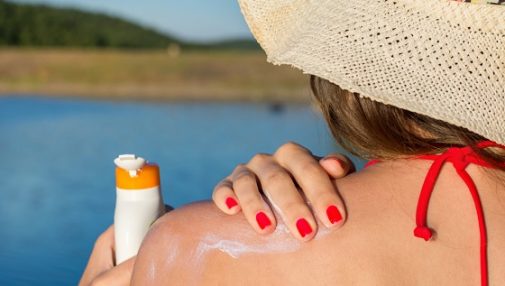The mistake you might make when applying sunscreen

Lathering on any sunscreen before a fun day out in the sun? You might not be applying enough.
Researchers at the University of Minnesota Medical School dispensed free sunscreen at the 2016 Minnesota State Fair, where 2,187 fair-goers used the product. Of this group, the researchers found that only one-third lathered the sunscreen to every exposed area of skin.
They also found the users were more likely to apply sunscreen to their arms (51%) and less likely to spread the product to their face (42%), chest (6%) and legs (3.6%).
One in every five Americans will develop some form of skin cancer in their lifetime, according to the American Academy of Dermatology. Most cases of skin cancer are linked to exposure to the sun’s UV rays.
These study results demonstrate that sunscreen is frequently inadequately applied or avoided all together, and there are varying reasons for this, says Dr. John Fox, a dermatologist at Advocate Illinois Masonic Medical Center. For instance, some people may not like the feeling of the lotion on their skin or may experience burning or stinging on the face or around the eyes.
Other barriers include lack of education on why we need sun protection and the need for reapplication, adds Dr. Stephen Carter, another dermatologist at Advocate Illinois Medical Center.
Dr. Carter and Dr. Fox provide the following tips and tricks for properly applying sunscreen:
- Find a sunscreen that you like. There are many options to choose from, including creams, lotions, including gels. Also if you are sensitive to breakouts, burning or stinging, find a product with physical agents, like zinc oxide, rather than chemical ingredients.
- Reapply sun block at least every two hours that you are in the sun. Also, reapply after excessive sweating or swimming.
- Strive to use the equivalent of a full shot glass of sunscreen, which should cover the entire body of an average-sized adult.
- Try to avoid sunscreen sprays, which can make it harder to cover exposed areas adequately and evenly, especially when it’s windy.
- Use products with SPF 30 or higher to properly protect your skin against harmful UV rays.
“It is true that applying sunscreen takes a little extra time and forethought, but the payoffs can be big. Staving off sun-induced skin aging and reducing the risk of skin cancer are proven benefits that are well worth the few moments it takes to apply sunscreen,” Dr. Fox says. “Find a broad spectrum sunscreen that you like, apply liberally, and reapply often.”
Related Posts
Comments
3 Comments
About the Author
Jaimie Oh, health enews contributor, is regional manager of public affairs and marketing at Advocate Health Care. She earned her Bachelor’s Degree in Journalism from the University of Missouri-Columbia and has nearly a decade of experience working in publishing, strategic communications and marketing. Outside of work, Jaimie trains for marathons with the goal of running 50 races before she turns 50 years old.


















Although sunscreens are effective, they do have side effects, such as skin irritation or a feeling of suffocation. Better and longer laster protection is now available through the use of clothing that is manufactured to have ratings of 100+ SPF. One company is Solumbra. It is American made, somewhat expensive, but very long lasting and effective. (I have used a shirt for over ten years when I garden and it gets very dirty and launders clean.) At least check out company’s site and see the medical research and results.
“Find a sunscreen you like” – great advice. While we love our own sunscreens, the best one is the one you will use. Clothing, shade, avoiding peak sun are all part of a good overall sun protection strategy.
it’s incredibly difficult for me to put sunscreen on when playing outdoor sports, because i eventually sweat it off, then you have to
1) have something to clean off the dirt and grime and sweat so you don’t just put sunscreen over dirt
2) wait until that dries
3) apply liberally again
4) wait until that soaks in
pretty much impossible to try to clean yourself